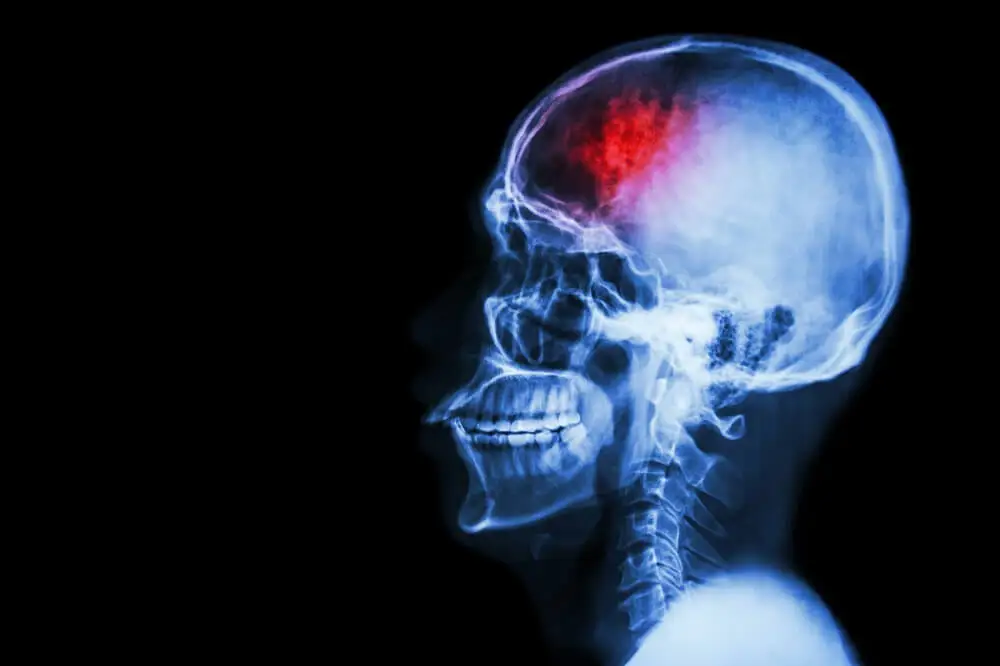What Are the Causes of Left Side Headaches?

Left side headaches are quite common, and, by themselves, shouldn’t be a cause for concern. The location gives some clues as to the source of the discomfort.
As in other areas, left side headaches can come on either slowly or suddenly. Sometimes it’s a sharp pain, and other times a more throbbing or pulsating pain. It can remain in a specific area or radiate to nearby areas, such as the neck and eyes.
If accompanied by other symptoms, such as vomiting, fever, or mental confusion, it’s likely to be associated with a problem that warrants immediate attention.
The most common causes of left side headaches
Many factors can cause left side headaches. They range from an improper lifestyle to a brain tumor. Most of the time they have a simple origin that can be corrected.
Lifestyle
An improper lifestyle is the main cause of left side headaches. We’re talking here about the consumption of inappropriate foods or substances and unhealthy habits.
Within this category we find factors such as the following:
- Skipping meals: The brain needs glucose from food to function properly. If a person doesn’t eat for longer than recommended, then they may suffer from headaches.
- Stress: Stress causes muscles to tense. It also causes biochemical changes that put the brain on alert. Both of these factors contribute to headaches.
- Poor sleep: Not getting enough sleep or not getting a good night’s sleep are two common causes of left side headaches.
- Certain foods: Certain products, especially those containing preservatives, can cause headaches. Processed meats, aged cheese, red wine, and nuts are some examples.
- Alcohol consumption: Many alcoholic beverages contain ethanol and this substance causes blood vessels to dilate. This can result in headaches.
- Compression: Tight helmets or hats, as well as hairstyles that pull on the scalp can also cause headaches.

Medications
Some medications can cause the so-called rebound effect. In these situations, excessive consumption gives rise to the symptom that you were wanting to eliminate. If this occurs, the pain almost always occurs after waking up, in the early hours of the day.
Some of the drugs that can cause left side rebound headaches are as follows:
- Ibuprofen
- Aspirin
- Paracetamol
- Naproxen
You might also be interested in: Tension Headache Remedies
Infection or allergy
Colds and cases of flu often cause sinus passages to become blocked and this may trigger a headache. Other more serious infections, such as encephalitis and meningitis, also cause pain, but they’re very severe and are accompanied by other important symptoms, such as seizures, fever, and neck stiffness.
Allergies also cause sinus congestion. This causes pressure in the cheeks and behind the forehead. This often results in a left-sided headache.
Discover more here: 4 Solutions for a Sinus Headache
Neurological problems
Left side headaches may be the result of neurological problems. From that perspective, the main origins are as follows:
- Temporal arteritis: Also called giant cell arteritis. This is the inflammation of the blood vessels on both sides of the head.
- Occipital neuralgia: The irritation of the nerves at the top of the neck and at the base of the skull may cause a headache on the left side and in the back. It’s severe, intense, and throbbing.
- Trigeminal neuralgia: The pain is felt in the face, but may also spread to the head.
More serious causes
Left side headaches may have a more serious origin, such as the following:
- High blood pressure: High blood pressure doesn’t usually cause symptoms, but in some people there’s a headache.
- Concussion: This is a traumatic brain injury as a result of a blow.
- Glaucoma: This is an ocular pathology that usually causes severe headaches, as well as eye pain and blurred vision.
- Stroke: This is caused by a hemorrhage inside the brain or by a clot blocking the blood flow in that area. One of the common symptoms is a fairly severe headache that comes on suddenly.
- Brain tumor: This doesn’t always cause specific signs, but may express itself with sudden, severe headaches.
When to consult a doctor
Most of the time, left side headaches can be treated at home with an ordinary pain reliever. However, as we have pointed out, they shouldn’t be underestimated.
A doctor should be consulted if the pain has the following characteristics:
- Too intense: Preventing you from getting out of bed or performing daily activities.
- Awakening at night: A person won’t get sufficient rest.
- Worsens over time: This may be a sign of something more severe.
- As a result of a blow to the head: This situation should be reported.
It’s also necessary to see a doctor when this type of pain is accompanied by symptoms such as the following:
- Stiffness in the neck
- Loss of vision or double vision
- Weakness or numbness
- Confusion
- Speech or movement problems
- Loss of consciousness

How to relieve the left side headaches
In principle, the best way to relieve left side headaches is to take a warm bath, breathe deeply, and try to relax. A nap, as well as eating something light can also help. Also, listening to soft music and taking an over-the-counter pain reliever are appropriate measures.
Another option is to place a warm or cold compress on the left side of the head. Breathing in the aroma of lavender oil often helps to dispel the discomfort.
A left side headache shouldn’t, in principle, be cause for alarm. It’s most likely to be due to stress or unhealthy life habits.
However, if it’s very intense or occurs frequently, then it’s important to discuss it with the doctor. This is also the case when it’s accompanied by other symptoms.
All cited sources were thoroughly reviewed by our team to ensure their quality, reliability, currency, and validity. The bibliography of this article was considered reliable and of academic or scientific accuracy.
- Clínica Mayo. (26 de enero de 2022). Neuralgia del trigémino. Disponible en: https://www.mayoclinic.org/es-es/diseases-conditions/trigeminal-neuralgia/symptoms-causes/syc-20353344.
- Korabelnikova, E. A., Danilov, A. B., Danilov, A. B., Vorobyeva, Y. D., Latysheva, N. V., & Artemenko, A. R. (2020). Sleep Disorders and Headache: A Review of Correlation and Mutual Influence. Pain and therapy, 9(2), 411–425. Recuperado de: https://doi.org/10.1007/s40122-020-00180-6
- Krymchantowski, A. V., & da Cunha Jevoux, C. (2014). Wine and headache. Headache, 54(6), 967–975. Recuperado de: https://pubmed.ncbi.nlm.nih.gov/24801068/.
- Krymchantowski A. V. (2010). Headaches due to external compression. Current pain and headache reports, 14(4), 321–324. Recuperado de: https://pubmed.ncbi.nlm.nih.gov/20499214/.
- Kristoffersen, E. S., & Lundqvist, C. (2014). Medication-overuse headache: epidemiology, diagnosis and treatment. Therapeutic advances in drug safety, 5(2), 87–99. Recuperado de: https://www.ncbi.nlm.nih.gov/pmc/articles/PMC4110872/.
- Stubberud, A., Buse, D. C., Kristoffersen, E. S., Linde, M., & Tronvik, E. (2021). Is there a causal relationship between stress and migraine? Current evidence and implications for management. The journal of headache and pain, 22(1), 155. Recuperado de: https://www.ncbi.nlm.nih.gov/pmc/articles/PMC8685490/.
This text is provided for informational purposes only and does not replace consultation with a professional. If in doubt, consult your specialist.








